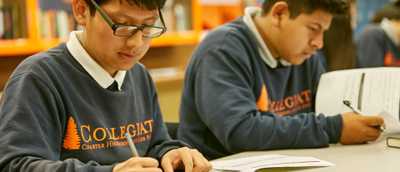"We are true to our creed when a little girl born into the bleakest poverty knows that she has the same chance to succeed as anybody else."
President Barack Obama
What is Equity in Education?
If you’ve ever pondered on the difference between equity and equality, it’s likely you turned to Google and found a variation of the picture here.
It’s a handy depiction of equality and equity at work. When resources are shared equally, everyone has, well, equal resources. There may be little or no regard for the recipient’s needs or if what they’re given suits them. On the other hand, when resources are shared equitably, everyone has the right resources. The recipient’s individual needs have been considered and met by what is provided.
Conversations about equity are not new to our fellow educators. They are growing more common thanks in part to the pandemic and the necessary movement for racial justice in America. At Yup, we continue to ask ourselves, “how can we better understand equity in education to achieve our goal of empowering every student to learn?” To do this work, we’re learning from education professionals and their recommendations.
We’re very lucky to work with Stevon Cook, San Francisco Board of Education Commissioner. Stevon is a self-described proud product of the SF public school system and has written several pieces on education equity. We recently spoke with Stevon on this topic and will share some of his insights throughout the piece. Later, we’ll wrap things up with an actionable list of books, videos, and further strategies on education equity.
Yup: Stevon, how do you describe equity in relation to education?
Stevon: Equity describes disparities and their outcomes along racial and economic lines. Those disparities play out in everything, from attendance to teaching approaches to testing outcomes. When we talk about achieving equity, we are talking about correcting those disparities. Equity means providing more resources in areas where there has been long-standing neglect.
Stevon is quick to emphasize that “achieving” equity is a formidable goal, and advises to instead focus on practicing equity every day.
Stevon: Achieving equity in education, and in other areas, is so difficult because the root causes are systemic. It has to be a constant practice, a vision that school leaders and educators have long-term alignment on.
Any educator reading this most likely agrees. Easier said than done, right? Even the most resourced schools can struggle to maintain alignment on initiatives, whether the goal is academic or cultural. Disruption happens! In normal times schools face lots of bumps in the road, like district budget fluctuation and teacher turnover. Then there are the less common disruptions like a global pandemic (fingers crossed this stays atypical!). Staying focused on long-term goals in education can be a challenge at best and a Sisyphean task at worst.
Now, the good news! Aligning a school towards greater equity is possible. A brilliant success story is found just a mile away from Yup’s HQ in San Francisco at John Muir Elementary. The case study is worth the full read, but we’ll summarize below for now.
The Success Story of John Muir Elementary
The demographic makeup of John Muir Elementary includes 25% African-American students, significantly more than the 4% district-wide average. In 2019, 59% of the school’s African-American students demonstrated math proficiency against a district average of 14%. That’s over four times as great!
What accounts for the quadrupling? Lots of hard work by teachers and students grounded in a shared approach for tackling the equity gap. The approach is culturally responsive teaching and it is growing in adoption largely thanks to Zaretta Hammond’s book Culturally Responsive Teaching and the Brain. Culturally responsive teaching (CRT) is a way for educators to better understand their students and their backgrounds, learning styles, and communication styles.
In her book, Hammond clarifies that CRT “is not a practice; it’s what informs our practice so we can make better teaching choices for eliciting, engaging, motivating, supporting, and expanding the intellectual capacity of ALL our students.”
In the case of John Muir, they implemented a more culturally responsive approach to math instruction called Teaching Through Problem Solving. This approach has students learning concepts and solving problems through discussions. The discussions are facilitated by the teacher but led by students. Importantly, students are encouraged to apply their own cultural framework to make the concept at hand more relevant to them. When something feels more relevant, it sticks!
“The brain uses cultural information to turn everyday happenings into meaningful events. If we want to help dependent learners do more higher order thinking and problem solving, then we have to access their brain’s cognitive structures to deliver culturally responsive instruction.”
Zaretta Hammond
Of course, these teaching changes and math strides didn’t happen overnight. John Muir actually took three years to get to where it is now! The school committed to long-term educator training and professional development in CRT. Amidst standard disruptions, the administration and teachers stayed laser-focused on their goal of improving student outcomes. The results of this equitable approach are clear. In the last few years, John Muir Elementary went from one of the lowest-performing schools in San Francisco to having the highest-achieving African-American students in the district.
We hope that this story inspired you (honestly, how could it not?). You might be thinking, wow, can I drive outcomes like John Muir at my school? The short answer is, yes! Of course, it takes a lot of work, alignment, and time, but your school absolutely can forge a path ahead.
Education Equity Summer Reading (and Watching) List
While it’s true that there’s no one-size-fits-all “toolkit” for achieving equity, there are certain practices and resources any school can adopt to plant the seeds. Below is our list to jumpstart your own learning.
Here is your education equity summer reading list:
- Culturally Responsive Teaching and the Brain by Zaretta Hammond
- The Dreamkeepers by Dr. Gloria Ladson-Billings
- Courageous Conversations by Glenn E. Singleton
- Discipline Over Punishment by Trevor W. Gardner
- The Opportunity Myth by The New Teacher Project
As well as a watch list:
- Zaretta Hammond “Culturally Responsive Teaching” at the SF Public Library
- Taking the Distance Out of Learning with Zaretta Hammond and Trevor Gardner
And finally, some strategies and practices to use every day:
We’ve addressed a lot of the how above. Before we sign off, we wanted to reiterate why focus on achieving equity. Stevon says it best.
Stevon: The practice of achieving equity promises every student the benefits of public education. Teachers also feel more accomplished and connected to their work instead of burnt out and overwhelmed. When we can correct long-standing injustices with equity, everyone does better!
--
Yup’s mission is to empower every student to learn, and we are doing everything we can to provide students with more opportunities and resources. Here are a few of the ways that our Yup for Schools program aims to combat the equity gap in education.
- On-demand access to experts: we take great care to vet the expert tutors who serve Yup students and ensure they have extensive math expertise
- Building a growth mindset: we train our tutors to help students cultivate flexible learning mindsets and smash the idea that their abilities are limited
- One-on-one private sessions: our text-based platform is a safe space for every student to engage with learning and feel comfortable making mistakes
- Focus on learning outcomes: our proprietary rubric for grading sessions measures student learning rather than educator input, and this sets us apart





